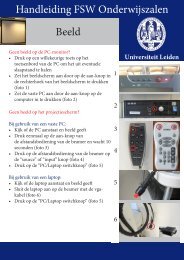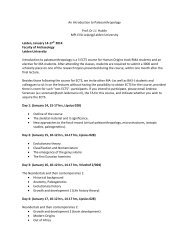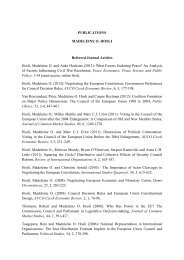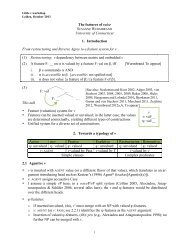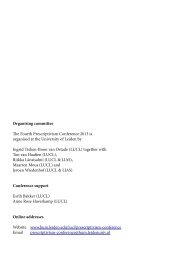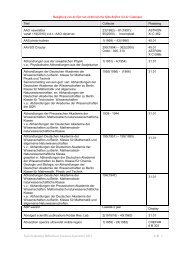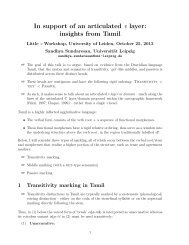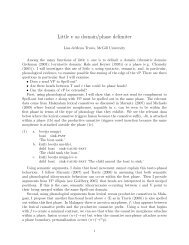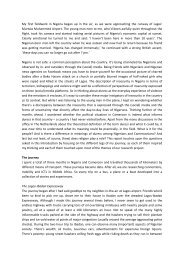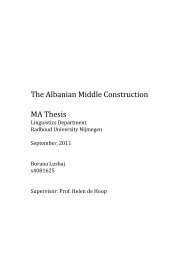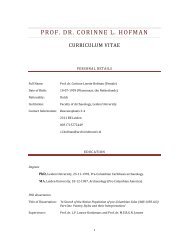Programme
Programme
Programme
Create successful ePaper yourself
Turn your PDF publications into a flip-book with our unique Google optimized e-Paper software.
Szemerényi’s law: a critical survey of the evidence<br />
Tijmen Pronk, Institut za hrvatski jezik / Leiden University<br />
Today it appears to be widely accepted that the lengthened grade vowel in the nominative<br />
singular of hysterodynamic nouns of the type *ph 2 tēr was the result of earlier loss of final *-s<br />
with compensatory lengthening of the preceding consonant, which was subsequently<br />
shortened with compensatory lengthening of the preceding vowel (Szemerényi 1999: 116).<br />
The development is generally referred to as Szemerényi’s law, although the basic idea behind<br />
it is much older (cf. Collinge 2009: 237).<br />
Nussbaum (1986: 129f.) added to Szemerényi’s hypothesis by suggesting that<br />
collectives ending in a long vowel and a resonant can be explained in a similar way. The<br />
collective ending *-h 2 would have been lost with eventual compensatory lengthening of the<br />
vowel in the preceding syllable. Szemerényi’s law has also been employed to explain a<br />
number of further isolated lengthened grades.<br />
Beekes (1990) provided several arguments against Szemerényi’s law. He argued that<br />
the asigmatic nom.sg. of the h 2 -stems proves the existence of originally asigmatic<br />
nominatives. He further argued that case endings like gen. sg. *-ei-s, *-en-s provide<br />
counterevidence against Szemerényi’s law. A similar argument applies to the thematic acc.pl.<br />
ending *-o-ns.<br />
During the lecture, the strengths and weaknesses of Szemerényi’s law will be<br />
discussed. We will also address the question whether alternative accounts of the lengthened<br />
grade may provide a better explanation for the data.<br />
References:<br />
Beekes, Robert S. P. 1990 “Wackernagel’s explanation of the lengthened grade”,<br />
Sprachwissenschaft und Philologie: Jacob Wackernagel und die Indogermanistik<br />
heute. Wiesbaden, 33–53.<br />
Collinge, N. E. 2009 The laws of Indo-European. Amsterdam–Philadelphia.<br />
Nussbaum, Alan 1986 Head and horn in Indo-European. Berlin–New York.<br />
Szemerényi, Oswald 1999 Introduction to Indo-European linguistics. Oxford.<br />
34



